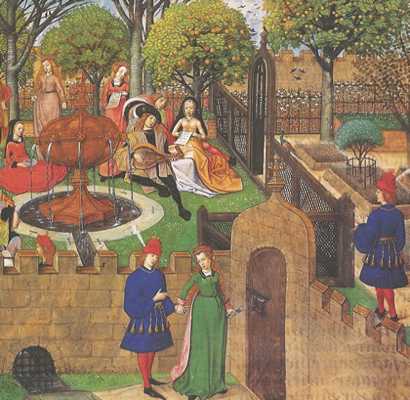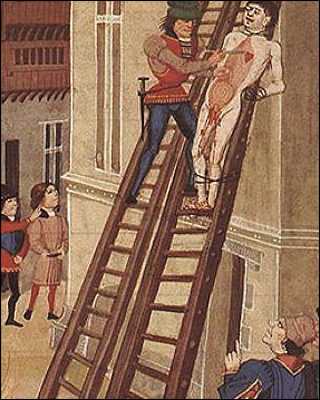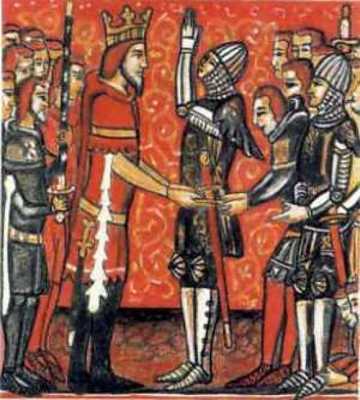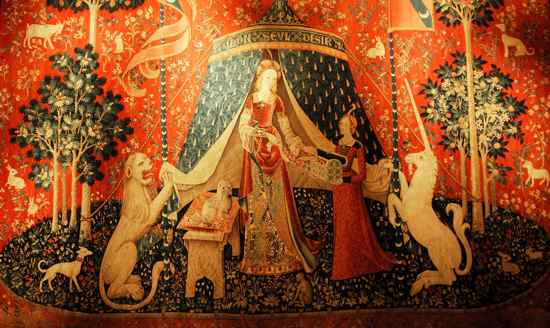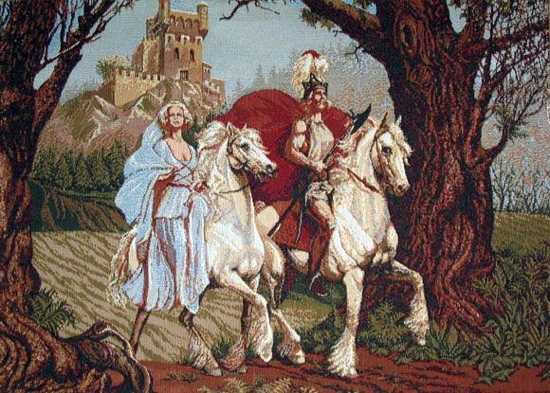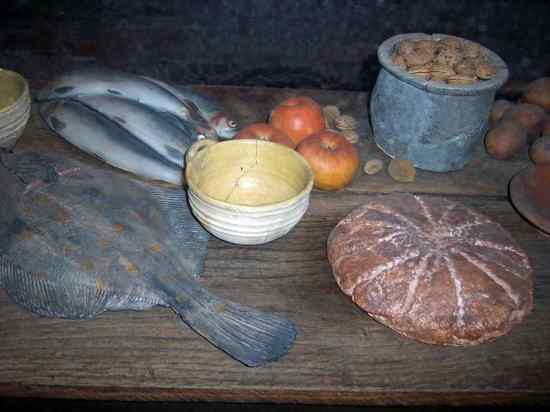NOTE: Many of the comments which are complaining about factual errors on this list are repeating myths already exposed on the previous list Top 10 Myths about the Middle Ages. Please read that list before commenting negatively.
The tax rates in medieval England varied a lot, depending on the King and what was happening in society. The taxes seldom went above 15% but were more often closer to the 10% mark. For most people today this is nearly one third or half of the tax currently being paid. The taxes went to support the military and the King, and even in times of war the taxes were never excessive. Taxes were usually paid based on the quantity of land you owned, so people like serfs were often exempt from national taxes and paid, instead, tithes in the form (usually) of wheat to their land owners.
We all know the Middle Ages had a more obvious separation of classes. However, regardless of which class you were in, you would have lived a better lifestyle. By “better” I mean healthier and easier. If you were an aristocrat you wouldn’t have worked a day in your life. You would eat delicious food all the time, and would have plenty of activities to keep you occupied. On the other hand, if you were a serf, you would work your fields during the summer months and laze about during the winter months enjoying your harvests (after the taxes you pay to your land owner). The only real requirement as a serf was that you pay your tithes (usually in wheat) and do a few other odd jobs, but, aside from that, you could do anything you wanted with your land, and the land owner had to guarantee you protection from criminals and provide for you in times of famine. Some serfs became incredibly wealthy through the wise use of their land.
The middle ages knew roughly 5 serial killers. Most of you will be able to name three of them: Elizabeth Bathory, Gilled de Rais and Sawney Bean (who may not have existed at all). Now try to name as many serial killers from the modern ages that you know. A lot more I bet. There were definitely a lot of murders in the Middle Ages, but the chances of the average person being a victim of murder were low. Murderers were tried and executed, and those who committed petty crimes were usually publicly shamed or fined. The stories we hear of people’s hands being cut off for stealing were usually from Eastern countries, or were during the very early years of the Middle ages, when Europe was establishing itself into the formation we generally know it today.
Unlike most of our countries today, there were no lobbyists, and governments (mostly ruled over by Kings) were not prone to switching policies every other year. In our current system we can expect to see fairly drastic changes to the laws under which we live every few years – in the Middle ages you had the same law (with a few exceptions) for most of your life. Life under a benevolent King was good for law abiding citizens, and you knew that unless the King was old, sick, or off fighting a war, tomorrow would be the same as today. This stability is something most of us have never known, so it can be hard to appreciate how much better it was than the present systems which have given rise to all manner of bizarre ideas such as the fart tax.
Since the end of the gold standard, money has become more a concept than a reality. In the Middle Ages, money was money. If you had gold, you had gold. Today’s monetary systems are largely controlled by the International Monetary Fund, and the ability of a nation to print money on demand has caused the recent devaluation of many currencies. The old adage says money doesn’t grow on trees – but, unfortunately, modern governments don’t know it. Food prices were relatively constant (with the exception of times of famine and during the price revolution), and people didn’t need to spend half their income paying off debts for things they didn’t need. In fact, society took a great turn for the worse in the so-called renaissance, which started a smear campaign against the Medieval feudal system in order to gain support for the new capital-based system. An economy based on production was replaced by an economy based on how much gold the King released to the public. Here is a quote from Life Inc: How Corporatism Conquered the World, and How We Can Take It Back. “Land was no longer a thing the peasants could grow stuff on, land became an investment, land became an asset class for the wealthy. Once it became an asset class they started Partitioning and Enclosure, which meant people weren’t allowed to grow stuff on it, so subsistence farming was no longer a viable lifestyle. If you can’t do subsistence farming you must find a job, so then you go into the city and volunteer to do unskilled labor in a proto-factory for some guy who wants the least-skilled, cheapest labor possible. You move your whole family to where the work is, into the squalor, where conditions are overcrowded and impoverished — the perfect breeding ground for plague and death!” Oh – and for a point of reference, the average wage in the mid 1400s was about 6 pennies a day – that equates to 130 modern pounds a day – compared to the current average in the UK of around 96 pounds per day.
People in the Middle Ages did (on average) prosper. And, contrary to popular belief, they also lived long! In general, a person in the Middle Ages who reached the age of 21 would live to just one or two years below the current average human life expectancy rate (mid-late sixties). Where the idea of dying at thirty came from, I do not know, but this myth has given rise to untold others, such as the “fact” the people had to marry in their early teen years (or worse – pre-teen years) because they would be dead before long. Infant mortality rates were higher than today, but, generally, people in the Middle Ages didn’t have on-demand access to the medical knowledge we have now. And, despite the death rates, most families had more children than today’s planned family structures, which could potentially result in a human population decline, as is already happening in some nations. Such nations include Italy and Russia (contrary to the bizarre and wrong notion that the Earth is overpopulated). Out of interest, here is a small list of countries currently in population decline: Russia, including Kazakhstan, Ukraine, Belarus, Moldova, Estonia, Latvia, Lithuania, Bulgaria, Georgia, Armenia, Bosnia, Croatia, Slovenia, Germany, Hungary, and Italy. And here are nations about to go into decline: Greece, Spain, Cuba, Uruguay, Denmark, Finland, Austria and Lesotho.
While a lot of people like modern art, many don’t. But most who do like it also appreciate the beauty of traditional art. In the Middle Ages virtually everyone in the West had access to at least one or two items of beauty. Whether it be a statue, or an image in a Church or beautiful tapestries made by family members – life was not a dull gray existence. Tapestry making was a popular pastime in the Middle Ages, and the survival of many of those works of art teaches us a lot about history (the Bayeux tapestry being the most well known example). And, even if you didn’t have access to tapestries or paintings, you could see some of the most incredible works of art in the vestments worn by priests at Mass every day, which were often woven with the addition of gold thread.
I am pretty sure that no one will disagree with this entry. Who wouldn’t want to live the life of a knight? You get to run around slaying the enemy in battles, dressed in armor and riding huge warhorses – and when you get some time off you get to save damsels in distress; and if we are to believe the story books, there are plenty of those to go around! Knights only had to give 40 days a year to their lord – after that they would spend their days in tournaments (initially very dangerous battles, but later more like games and competitions). A young man would start his knight training early and would become a full fledged knight between the ages of 16 and 20.
No genetically modified food, no chemicals, no intensive farming, no need for the “organic” label. These are just four of the many reasons that medieval food was better than what we have today. But, perhaps most importantly, none of the food had had its flavor bred out of it in order to make it look appealing to supermarket shopping masses. And, contrary to popular belief, people in the middle ages ate very well. Here is what BBC says: “The average medieval peasant, however, would have eaten nearly two loaves of bread each day, and 8oz of meat or fish, the size of an average steak. This would have been accompanied by liberal quantities of vegetables, including beans, turnips and parsnips, and washed down by three pints of ale.” That equates to around 3,500 to 4,000 calories per day (the average man eats 2,700 these days).
The Middle Ages didn’t really have unemployment troubles like we do these days. If you were a serf, you worked the land. If you were in the unnamed middle class, you ran a shop or worked for a Lord. If you were upper class, you had hunting and fun stuff to do. In most cities huge Cathedrals were being built so most men could work in some capacity on those. If you really couldn’t work, it was usually because you were sick or had disabilities. People who couldn’t work were taken care of by charitable nuns and monks – or by their own families if they had sufficient funds to do so. Read More: Facebook Instagram Email

